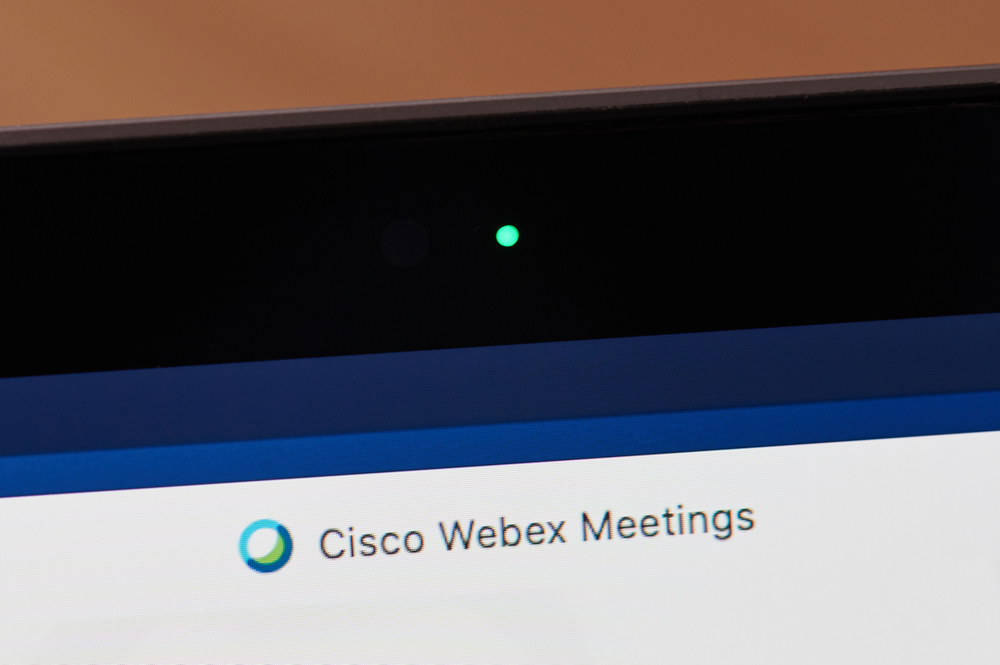Weekly threat roundup: Cisco, BlueKeep, Apache Unomi
Pulling together the most dangerous and pressing flaws that businesses need to patch


Patch management is far easier said than done, and security teams may often be forced into prioritising fixes for several business-critical systems, all released at once. It’s become typical, for example, to expect dozens of patches to be released on Microsoft’s Patch Tuesday, with other vendors also routinely getting in on the act.
Below, IT Pro has collated the most pressing disclosures from the last seven days, including details such as a summary of the exploit mechanism, and whether the vulnerability is being exploited in the wild. This is in order to give teams a sense of which bugs and flaws might pose the most dangerous immediate security risks.
‘Ghost’ vulnerability in Cisco Webex

Cisco has patched a flaw in its Webex video conferencing platform that could allow an attendee to behave as a ‘ghost’ in a live meeting, allowing them to spy on participants without them knowing.
The medium-risk flaw, assigned CVE-2020-3419, would have allowed a remote attacker to join a session without appearing on the participant list. This has been blamed on the improper handling of authentication tokens by a vulnerable Webex site. Successful exploitation required the attacker to have access to join a meeting, including join links and passwords, but once in they would then gain full access to audio, video, chat, and screen sharing capabilities.
RCE flaws left out of Cisco Security Manager patch notes

Eyebrows were raised when security researcher Florian Hauser claimed that the latest patch notes released by Cisco this week left out the details of 12 severe security flaws in the company’s Security Manager (CSM) tool. These 12 bugs were reported to the networking giant in July, and almost all involved remote code execution.
The developer initially failed to mention these in a recent set of patch notes, according to Hauser, nor did the company release security advisories when CSM was updated to version 4.22 earlier this month. As a result, the researcher published the proof-of-concept for all 12 flaws.
The firm subsequently released three advisories for vulnerabilities tagged CVE-2020-27130, CVE-2020-27131 and CVE-2020-27125, crediting Hauser with their discovery.
Sign up today and you will receive a free copy of our Future Focus 2025 report - the leading guidance on AI, cybersecurity and other IT challenges as per 700+ senior executives
Warning issued over historic flaws - including BlueKeep

Millions of corporate devices are still vulnerable to historic vulnerabilities, according to analysis by security researcher Jan Kopriva, including roughly 240,000 machines susceptible to the BlueKeep exploit.
Although the infamous vulnerability was discovered more than a year and a half ago, an alarming number of devices are still vulnerable. This is particularly concerning given the widely-publicised ‘wormable’ nature of the flaw and the way it can spread between terminals in a corporate network without any user intervention.
By scanning the Shodan search engine, Kopriva was able to ascertain a rough indication of the number of devices vulnerable to specific flaws, all discovered before 2020. For example, an Apache HTTP server root privilege escalation flaw tagged CVE-2019-0211 still affects 3,357,835 machines. The HeartBleed OpenSSL flaw, meanwhile, still affects 204,878 devices despite a patch being released more than six years ago.
Cookie and file theft in Firefox for Android

Mozilla has rolled out a fix for a vulnerability in the mobile version of its Firefox web browser after reports showed attackers were able to exploit it to steal files from the device, including cookies for previously visited websites.
Tagged CVE-2020-15647, the vulnerability lies in how Firefox browsers use Uniform Resource Identifier (URI), a string that corresponds with locally saved files - and allows Android devices to identify data in a content provider. Researcher Pedro Oliveira demonstrated it was possible to steal files from the device solely by having the victim visit a webpage, including a database containing all cookies from visited domains.
Firefox acknowledged the report swiftly when it was first flagged in June earlier this year, and issued a fix in July 2020. This is the second prominent Firefox for Android flaw disclosed in recent weeks, following another bug that could allow attackers to hijack sessions over Wi-Fi.
Apache Unomi RCE flaw discovered

The Java open source customer data platform, Apache Unomi, contained a now patched flaw that allowed attackers to send malicious requests with MVEL and OGNL expressions (which sit within the Unomi package). This could eventually lead to remote code execution.
The flaw, tagged CVE-2020-13942 and rated a maximum of 10.0 on the CVSS severity scale, was discovered by the Checkmarx Security Research Team and has since been publicised because the Unomi platform is a highly desired target for attackers. This is because the system can be integrated with various other platforms, including CMS, CRM, native mobile apps, and more, and contains an abundance of data.
The vulnerability has been fixed, and users have been urged to upgrade to Apache Unomi version 1.5.2 or later as soon as possible.
Critical remote attacking flaw found in industrial machinery

The 499ES EtherNet/IP (ENIP) stack built by Real-Time Automation (RTA) is currently vulnerable to a critical flaw that could allow a remote attacker to compromise industrial connected machinery. This is the stack that powers the control system devices in industrial and manufacturing environments.
Tracked as CVE-2020-25159 and rated 9.8 out of 10 in severity on the CVSS scale, the stack buffer overflow vulnerability is said to affect ENIP versions of 2.28 and lower. Exploitation can allow an attacker to send a specially crafted packet the could result in a denial-of-service condition or even arbitrary code execution.
The flaw was discovered by Claroty’s Sharon Birzinov and reported to the US government’s Cybersecurity and Infrastructure Security Agency (CISA). The agency recommends that users minimise network exposure for all control system devices to ensure they’re not accessible from the internet, as well as locate control system networks and remote devices behind the firewall and isolate them from the corporate network.
There are, at the time of publishing, no known public exploits specifically targeting this vulnerability.

Keumars Afifi-Sabet is a writer and editor that specialises in public sector, cyber security, and cloud computing. He first joined ITPro as a staff writer in April 2018 and eventually became its Features Editor. Although a regular contributor to other tech sites in the past, these days you will find Keumars on LiveScience, where he runs its Technology section.
-
 Nearly half of software developers don’t check AI-generated code
Nearly half of software developers don’t check AI-generated codeNews A concerning number of developers are failing to check AI-generated code, exposing enterprises to huge security threats
-
 Veeam patches Backup & Replication vulnerabilities, urges users to update
Veeam patches Backup & Replication vulnerabilities, urges users to updateNews The vulnerabilities affect Veeam Backup & Replication 13.0.1.180 and all earlier version 13 builds – but not previous versions.
-
 Veeam patches Backup & Replication vulnerabilities, urges users to update
Veeam patches Backup & Replication vulnerabilities, urges users to updateNews The vulnerabilities affect Veeam Backup & Replication 13.0.1.180 and all earlier version 13 builds – but not previous versions.
-
 Two Fortinet vulnerabilities are being exploited in the wild – patch now
Two Fortinet vulnerabilities are being exploited in the wild – patch nowNews Arctic Wolf and Rapid7 said security teams should act immediately to mitigate the Fortinet vulnerabilities
-
 Everything you need to know about Google and Apple’s emergency zero-day patches
Everything you need to know about Google and Apple’s emergency zero-day patchesNews A serious zero-day bug was spotted in Chrome systems that impacts Apple users too, forcing both companies to issue emergency patches
-
 Security experts claim the CVE Program isn’t up to scratch anymore — inaccurate scores and lengthy delays mean the system needs updated
Security experts claim the CVE Program isn’t up to scratch anymore — inaccurate scores and lengthy delays mean the system needs updatedNews CVE data is vital in combating emerging threats, yet inaccurate ratings and lengthy wait times are placing enterprises at risk
-
 IBM AIX users urged to patch immediately as researchers sound alarm on critical flaws
IBM AIX users urged to patch immediately as researchers sound alarm on critical flawsNews Network administrators should patch the four IBM AIX flaws as soon as possible
-
 Critical Dell Storage Manager flaws could let hackers access sensitive data – patch now
Critical Dell Storage Manager flaws could let hackers access sensitive data – patch nowNews A trio of flaws in Dell Storage Manager has prompted a customer alert
-
 Flaw in Lenovo’s customer service AI chatbot could let hackers run malicious code, breach networks
Flaw in Lenovo’s customer service AI chatbot could let hackers run malicious code, breach networksNews Hackers abusing the Lenovo flaw could inject malicious code with just a single prompt
-
 Industry welcomes the NCSC’s new Vulnerability Research Initiative – but does it go far enough?
Industry welcomes the NCSC’s new Vulnerability Research Initiative – but does it go far enough?News The cybersecurity agency will work with external researchers to uncover potential security holes in hardware and software